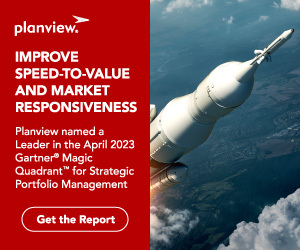Innovation is inherently risky. By definition, you’re doing something that you haven’t done before so there are no guarantees it will work. The mindset in many organizations is to “minimize” risk as if it were a disease, but it isn’t that simple. The best companies face risk head-on and manage it both systematically and transparently.
Back-ups as Contingency Plans
One example of managing risk is having “back-up” projects that target the same technology/market as another—typically high-risk, high-value—project. These back-ups are a hedge in case the primary project fails. Back-ups play an important role in R&D portfolio management, yet also pose a unique set of challenges. Which projects should have back-ups? When is the right time to jettison them? While there isn’t a single answer to these questions that fits all situations, there are good and bad ways to approach such decisions.
Positive Thinking or the Ostrich Approach?
This is part of a discussion I had with the Finance group of a client on how to value back-up projects:
Executive: We should assign back-ups a zero value.
Me: If the projects have zero value, we shouldn’t be spending money on them. If they do have value, we should have an idea of what that value is so we can decide which back-ups are worth pursuing.
Executive: If we assign a value to the back-ups we’re admitting that the primary projects might not make it. We should plan for success. While there may be something to the power of positive thinking, successful companies look to the Scouts for guidance instead. Instead of focusing only on success and being surprised by failure, they create contingency plans for what to do if key projects fail.
Another failure mode appears amidst this atmosphere of wishful thinking. We’ve seen “planning for success” lead to denial about the true risks and downside potential of a project. Rather than face the facts, stakeholders continue to support and fund the project, to the detriment of other more promising initiatives in the pipeline. The most prudent (and compassionate!) action available in this situation is project cancellation, and reassignment of available resources on more exciting, promising, and potentially profitable endeavors. By identifying those alternative projects worthy of funding, it becomes easier for the organization to admit when a project isn’t living up to its potential.
Case Study: Gauging the Impact

Bad news on project X led to an examination of the base case without it, and an alternative project mix that accelerated other promising initiatives
One of our clients had some early warnings that a key project might not be successful. They immediately looked at the impact of its failure on the portfolio. By comparing the portfolio revenue forecast with the project to the forecast without the project, they understood the magnitude of the revenue gap that would open up. The next step was to understand which projects should be added and which projects should be accelerated in the face of the key project’s failure. They identified a set of projects that wouldn’t get them back to the current forecast, but they were comfortable with the resulting gap. If the gap was still too large, they planned on investigating licensing opportunities to boost medium-term revenue.
What would you do if your top-of-the-heap project (and its follow-on brethren) hit an insurmountable obstacle and was cancelled? How would you effectively redirect the resources assigned to that project? Are plans already sketched out to accelerate development of other initiatives, and begin development of on-deck opportunities?
Conclusion: Face Your Fears
 Innovative companies cannot afford to fear failure. News that a project may fail shouldn’t be ignored, sugar-coated, or swept under the rug. Instead, contingency plans should be generated to ensure resources are transferred smoothly and quickly if needed. The well-prepared organization knows which path to take should events turn out poorly, and are able to avoid panic and confusion. Just like the Scouts.
Innovative companies cannot afford to fear failure. News that a project may fail shouldn’t be ignored, sugar-coated, or swept under the rug. Instead, contingency plans should be generated to ensure resources are transferred smoothly and quickly if needed. The well-prepared organization knows which path to take should events turn out poorly, and are able to avoid panic and confusion. Just like the Scouts.
You can find case studies of strategic R&D portfolio management applications of the Enrich Analytics Platform on our website.




